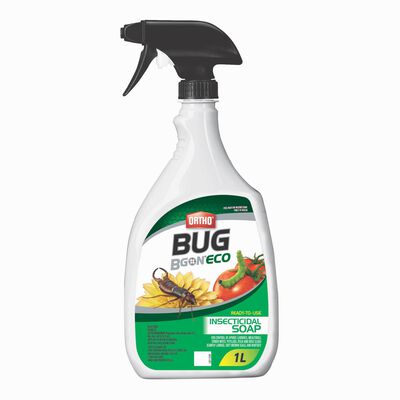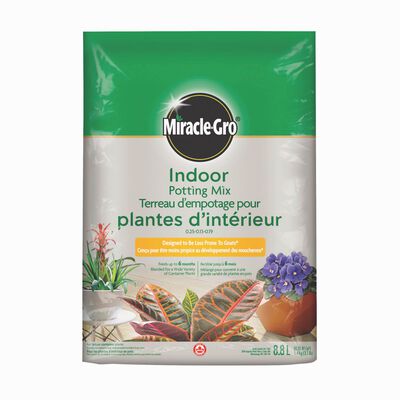
Common Indoor Plant Problems and How to Fix Them
You took the plunge into plant parenthood and have been dutifully caring for your botanical babies, until you suddenly notice an issue that has you asking, "What's wrong with my plant?" Don't panic. Many common ailments can be remedied. Learn how to diagnose plant problems, as well as how to treat them, so your extended plant fam knows you always have its back.
Problems with Leaves
One reason it's easy to solve common problems is because plants have no poker face—they tend to let you know if they're feeling meh (some more visibly than others). Typically, their tell is in their leaves. Here's what to look out for and what to do if your plant's foliage is looking funky.
Brown Tips on Leaves
Crispy brown leaves are a sure sign it's time to try something different. There are a few factors that can cause your indoor plant's leaves to turn brown along the edges or at the tips. Here are some of the most likely reasons, along with potential fixes:
- Mineral buildup: It's okay to be a little snobby about water when it comes to your plants. Minerals found in tap water, like fluoride, calcium, and chlorine, can build up and make your plant unhappy. Let tap water stand for 24 hours before using, or use rain or filtered water.
- Salt build-up: Brown tips plus a white crust on the soil can signal salt build-up. This can stem from your water source, but more often it's from overfeeding—plant food is key for best growth, but always follow those label directions! Course-correct by placing your plant under running water (in a sink or tub) until H2O flows out of the drainage hole. Then repeat. If conditions don't improve, repot your plant in fresh potting mix. (It's a common problem—get the full lowdown on salt build-up in our article.)
- Hot or dry air: Is your plant next to a vent? Is the humidity low in your house? Make sure your plant isn't sitting next to a heater. If dry air seems to be the culprit, regularly spritz your plant's leaves with water or use a humidifier.
Wilting and Yellowing Leaves
Whomp, whomp—a saggy, sallow plant is basically the horticultural version of a sad trombone sound effect. Why do plants yellow and wilt? For starters, it could be old age, a totally natural progression. However, if your plant is young and yellowing, you might have a problem such as one of these:
- Root rot: Contaminated potting mix, dirty containers, and soil that's wet for too long can all create a breeding ground for root rot. This is when fungi infect your plant's roots and stems, ultimately causing its demise. If the damage is minimal, you can try cutting out infected parts and repotting, but in most cases, it's best to replace your plant. It's okay—you can't win ‘em all.
- Inconsistent watering: Some plants won't notice if you're on top of watering one week and not the next. Others are more needy. Keep the H2O flowing evenly and consistently, and double-check the plant tag for specific needs, like misting.
- Over-fertilizing: Sometimes there can be too much of a good thing: Excess plant food can cause a mineral build-up. To remedy this, place your plant under a running tap to flush out the abundance of minerals, and then cut back on feeding (if you're fertilizing your plant every week or 2, try feeding it every 30 days instead.)
- Pot-bound roots: If you see roots coming out the bottom of the drainage holes, it could be time for a larger container.
- Insects or mites: Manually remove or gently spray any life-sucking insects found on your houseplants with Ortho® Bug B Gon® Eco Insecticide Ready-To-Use. Do not use it on edibles, and always follow all label directions.
Leaf Drop
As plants mature, they drop leaves. It's natural. However, if you come home to a floor scattered in foliage, there's a problem. In this case, moisture imbalance is likely to blame. Over or underwatering, or inconsistent moisture levels, can cause sudden leaf drop. Rapid fluctuations in temp can also play a role. Focus on keeping both the amount of moisture and the temperature steady in your home to see if the dropping stops. If it doesn't, check the plant tag to be sure you're giving your plant the right care it needs, and also inspect it for pests. A closer look could reveal teeny-tiny spider mites, for example. If you spot a pest, read our steps on dealing with them in the section below.
Dots or Spots
We're big fans of the polka dot plant, but not of dots on plants that aren't meant to have them. Who's likely to blame? Bacteria and fungi. Bacteria tend to create spots that look like water splotches, while fungi cause brown blotches with a yellow halo. Regardless of the cause, the treatment is generally the same:
- Remove infected leaves.
- Improve air circulation.
- Keep H2O off the leaves (water at the base of the plant, instead).
- Spray the whole shebang with a fungicide designed to control fungi and bacteria (follow the label direction!), or try copper soap for fungi specifically.
Tiny black spots may be the handiwork of spider mites. The mites themselves resemble specks, which you also might see on your plant. Stick it in the shower or take it outside to give your plant a good spray (don't forget the undersides of the leaves), which can help manually remove the mites. Dousing your plant in insecticidal soap, following all label directions, can also do the trick.
Bleached or White Leaves
Unlike humans who turn a shade darker after a long day at the beach, plants that get too much sun end up losing their colour. If you encounter scorched, washed-out leaves on your indoor plants, move them to a shadier spot.
Fuzzy or Powdery Leaves
Much like the raspberries you forgot about in the back of the fridge, plants can also sprout mold and mildew. Gray mold enters the scene on old leaves and spent flowers, while powdery mildew creates a white coating on fresh leaves. For both issues, move the plant to a place with better air circulation and remove any impacted leaves. You can also spray powdery mildew with a fungicide approved for plant use.
Problems with Pests
A variety of insects will try to set up shop in your plants. Their threat level ranges from moderately annoying to potentially lethal. But it's winter—how did they get in? Pests often hitch a ride on a new plant or those that spent the summer outdoors and came back in for winter. Here are a few common offenders and how to send them packing:
- Aphids: You'll usually find these small, pear-shaped insects snacking on sap. Hand-pick small infestations or apply an insecticidal soap, such as Ortho® Bug B Gon® ECO Insecticidal Soap Ready-To-Use, pyrethrin, or neem oil.
- Fungus gnats: If you find yourself trying to squash tiny, slow-flying black bugs, there's a good chance you're dealing with fungus gnats. They love to burrow in moist, compost-rich soil and reproduce quickly. It can be a little challenging to get rid of gnats, but with perseverance it's totally doable. For starters, use Miracle-Gro® Indoor Potting Mix, which doesn't contain compost or bark, making it less prone to gnats. Then, let your plant dry out between waterings, use yellow sticky traps, and spray an insecticide to eliminate the next generation of gnats.
- Mealybugs: Small, fuzzy, and pale in appearance, mealybugs like to hang out on the undersides of leaves. Like aphids, they respond to insecticidal soap (especially if caught early on) as well as neem oil, pyrethrin, and DIY methods like rubbing alcohol, hot pepper wax, and clove or garlic oil.
Despite your best efforts, you're likely to encounter indoor gardening problems from time to time. It happens. But by knowing the warning signs, possible culprits, and troubleshooting methods, you can support your leafy family anytime you hit a rough patch. That's what parents do!

